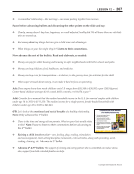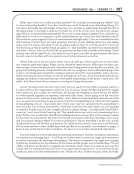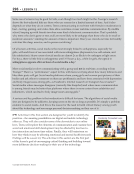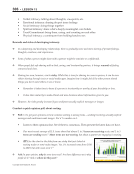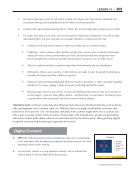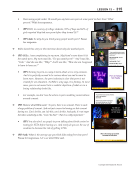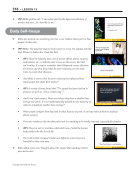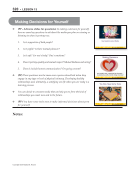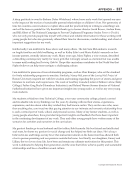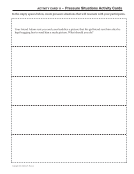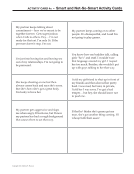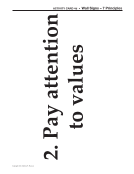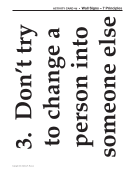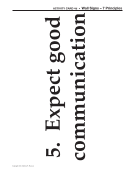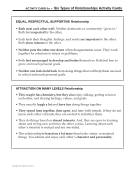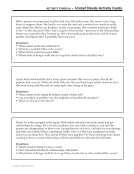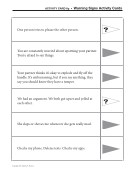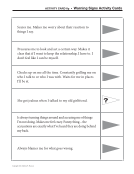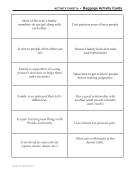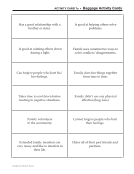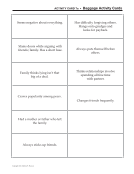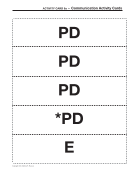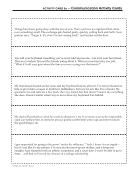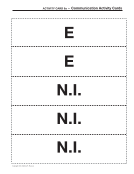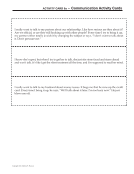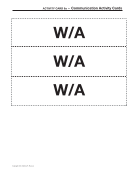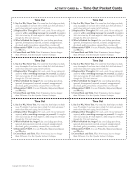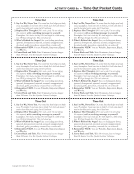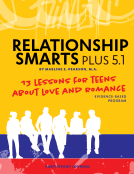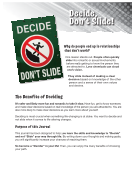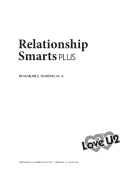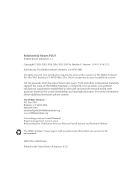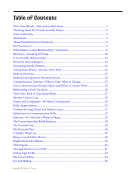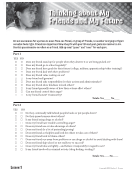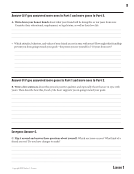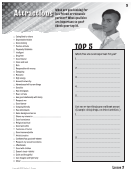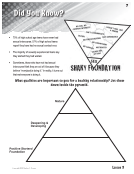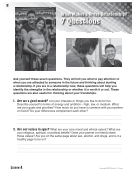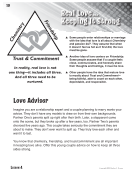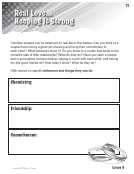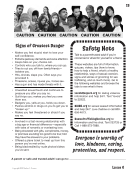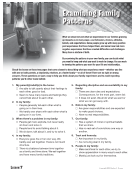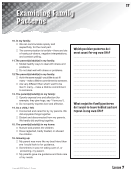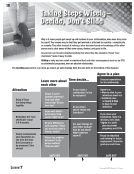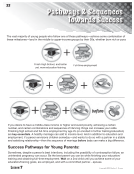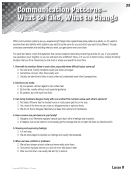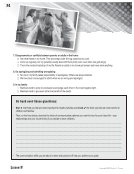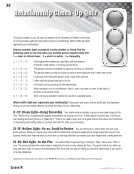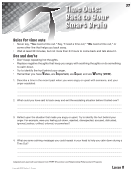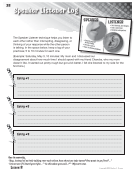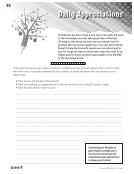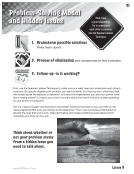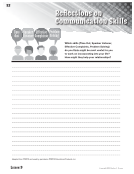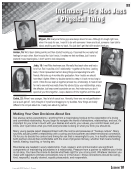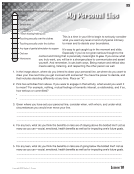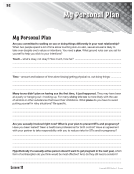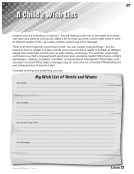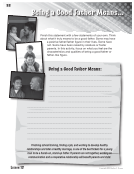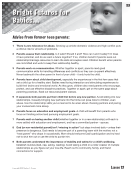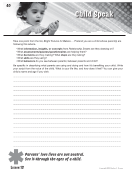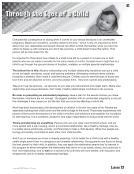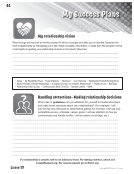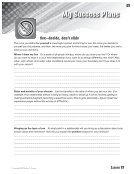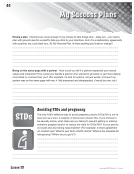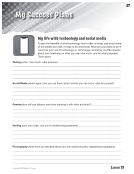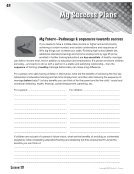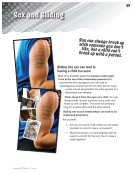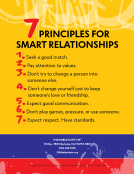Copyright 2025 Marline E. Pearson
100 • LESSON 6
❖ (PPs) Dating violence can come in several forms. Read points off each slide.
• Physical: being grabbed, pinched, slapped, shoved, scratched, hit,
punched, kicked, or slammed.
• Verbal/Emotional/Psychological: name-calling, shaming,
bullying, embarrassing on purpose to threaten or harm a person’s
sense of self-worth.
• Sexual: forcing a partner to engage in a sex act when they do not
want to or cannot consent. Includes unwanted kissing, touching,
onto forced sex acts.
• Stalking: a pattern of behaviors that feel harassing or threatening
that cause fear. Unwanted attention such as following you around,
waiting for you, excessive texting.
❖ (PP) Abuse can also take place electronically—this technology has
increased the potential for controlling behaviors.2 People can be coerced and
bullied through texts and other social media, and their activities/movements
can be tracked and monitored.
❖ Read the text messages in the slide.
(PP) How common is dating violence?
❖ Among high school students nationwide who reported dating :3
• 10.4% reported they had been hit, slammed into something, or injured on purpose by someone they
were dating or going with.
• 5.9% reported they had been forced to do sexual things they did not want to do (counting kissing,
touching, and being physically forced to have sexual intercourse) by someone they were dating or
going out with. All footnotes here are from YRBS 2023.
❖ It is important for everyone to have an awareness and develop skills to protect themselves.
Important Facts
100 • LESSON 6
❖ (PPs) Dating violence can come in several forms. Read points off each slide.
• Physical: being grabbed, pinched, slapped, shoved, scratched, hit,
punched, kicked, or slammed.
• Verbal/Emotional/Psychological: name-calling, shaming,
bullying, embarrassing on purpose to threaten or harm a person’s
sense of self-worth.
• Sexual: forcing a partner to engage in a sex act when they do not
want to or cannot consent. Includes unwanted kissing, touching,
onto forced sex acts.
• Stalking: a pattern of behaviors that feel harassing or threatening
that cause fear. Unwanted attention such as following you around,
waiting for you, excessive texting.
❖ (PP) Abuse can also take place electronically—this technology has
increased the potential for controlling behaviors.2 People can be coerced and
bullied through texts and other social media, and their activities/movements
can be tracked and monitored.
❖ Read the text messages in the slide.
(PP) How common is dating violence?
❖ Among high school students nationwide who reported dating :3
• 10.4% reported they had been hit, slammed into something, or injured on purpose by someone they
were dating or going with.
• 5.9% reported they had been forced to do sexual things they did not want to do (counting kissing,
touching, and being physically forced to have sexual intercourse) by someone they were dating or
going out with. All footnotes here are from YRBS 2023.
❖ It is important for everyone to have an awareness and develop skills to protect themselves.
Important Facts
























































































































































































































































































